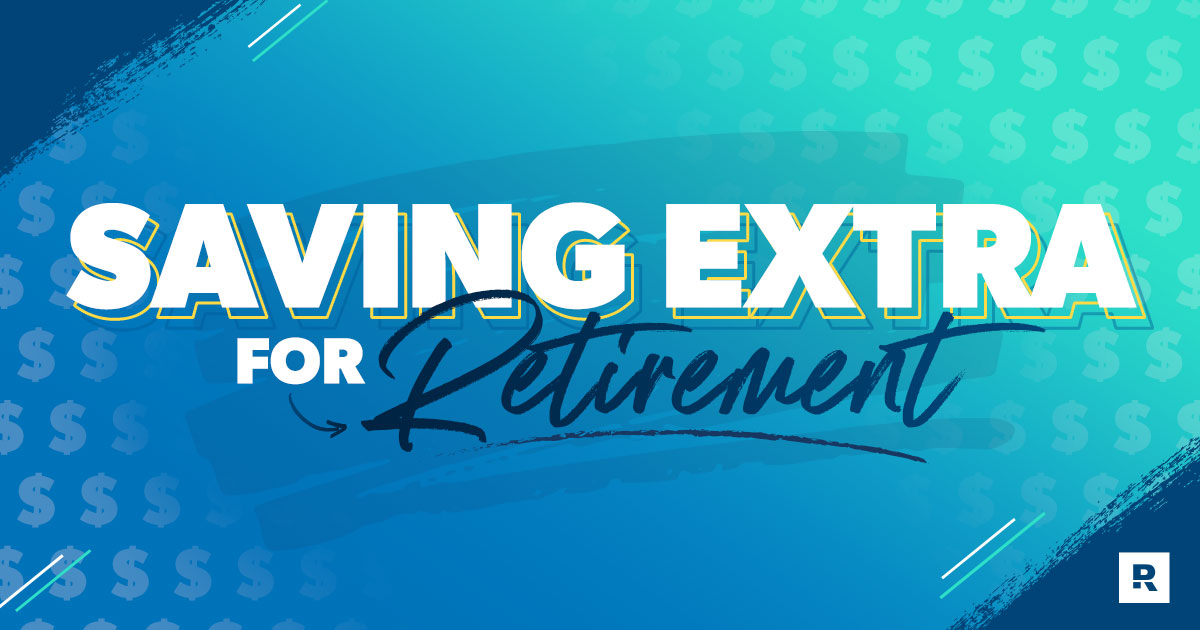How to Save an Extra $300 Every Month for Retirement
6 Min Read | Jun 18, 2025

Key Takeaways
- Finding just $300 more per month to invest could add hundreds of thousands of dollars to your nest egg over time.
- Pay raises and bonuses are perfect opportunities to increase your retirement contributions without changing your current lifestyle.
- If you get big tax refunds every year, adjust your tax withholding so you’re not sending the government more than you owe. You’ll get more money in each paycheck, which you can invest for the future.
- Free up more cash for investing by selling unused items and cutting back on miscellaneous spending like subscriptions, dining out or impulse shopping.
We want to let you in on a little secret. Are you ready? Here it is: If you want to have enough money saved for retirement, you need to actually save money for retirement.
Sounds obvious, right? After all, your savings rate—how much of your income you’re saving for retirement—is the biggest factor that will determine your retirement success. To get the kind of retirement we all dream of, you need to consistently invest 15% of your gross income into tax-advantaged retirement accounts like your 401(k) and Roth IRA.
And yet, according to Ramsey Solutions’ State of Personal Finance report, more than half of millennials (53%) say the amount of debt they have is greater than what they have in retirement savings. And two-thirds of Americans (66%) say they plan on working past age 65—many of them because they have to, not because they want to.
Here’s the deal: A lot of people out there simply aren’t saving enough for their golden years—if they’re saving anything at all.
4 Quick Ways to Boost Your Retirement Savings
Dream with us for a minute. What if you found a way to add an extra $300 per month into your retirement accounts? If you did that for just five years, you could add over $368,000 to your nest egg over 30 years.
That means with a little planning and a big dose of motivation, nearly everyone can retire with at least enough money to cover their bills.
Where can you find $300 a month in your budget to add to your nest egg? The good news is, you may not have to completely sacrifice your time and your small luxuries to find it. Here are a few painless but effective options to kick-start your retirement plan.
1. Take advantage of your raises.
Any time you get a bump in pay, you need to celebrate—not because you can buy more stuff but because you can roll that money right into your retirement account.
Generally, most workers can expect a pay raise between 3–5% each year. Employers say they plan to increase their salary budgets by 3.9% on average in 2025.1 With the median household income standing at around $80,610, a 4% raise could mean a $3,225 bump in pay this year.2 That works out to an extra $268 per month!
Getting a bonus soon? Instead of letting lifestyle creep keep you stuck in the status quo, make the choice right away to shift that extra income into your 401(k) or Roth IRA for an easy way to reach your investing goal without ever changing your budget!
2. Fix your tax withholding.
The average income tax refund was around $3,140 for the 2024 tax season.3 That’s a hefty sum to loan to Uncle Sam for a year. It just takes a few minutes to reduce your tax withholding amount so that money can go to your 401(k) instead of the government—to the tune of $260 a month!
3. Sell some stuff.
People spend millions of dollars at yard sales each week in the U.S. Get in on that action and sell some stuff! Put the profits toward retirement investments, where even $100 can turn into thousands of dollars in your nest egg. Based on what we’ve seen at garage sales, you can rack up more than $100 easy!
How much will you need for retirement? Find out with this free tool!
And you don’t have to stop at the driveway—you can also put your stuff up for sale online. Sites like Facebook Marketplace, eBay and Poshmark make it easier than ever to turn clutter into cash without ever leaving your couch. Those old golf clubs you haven’t touched in years? List ’em. The designer purse collecting dust in the closet? Sell it. Every dollar you make can go straight toward building your retirement dream.
4. Trim miscellaneous expenses.
Don’t forget about small expenses that can add up. Taking a closer look at your budget and reviewing your spending habits could reveal some areas where you can cut back and invest the savings for retirement instead:
- Subscriptions and streaming services: If you signed up for a gym membership in January and haven’t been back since, maybe it’s time to cut your losses. And maybe you don’t need Netflix and Hulu and Paramount+ and Max (or whatever they’re calling it these days). “Streamflation” is real, but canceling just a few streaming services can save you hundreds of dollars over the course of the year.4
- Food and dining: Americans love dining out. In fact, we spend around $3,933 a year (or $327 each month) eating away from home.5 But with some intentional planning and effort, you can save a ton of money and eat healthy on a budget at home. Start by making a commitment to cook at home at least four times a week—and take advantage of leftovers. Your wallet (and your waistline) will thank you!
- Tech and utilities: Cell phone, internet and cable bills can be pricy these days. And with unlimited plans making a comeback, it’s easy to overpay for services, features and data you don’t really use. For example, if you only use 3 GB of data, why pay for 16 GB? By switching carriers or opting for a plan with less data, you could have an additional $50 a month to put toward your future wealth.
- Shopping: Here’s a fun little homework assignment: Take a look at how much you spent shopping over the past month. The results might surprise you. In fact, the average American spends $150 each month on impulse purchases—like buying candy and gum from the checkout counter or new clothes and shoes at the mall.6 Listen, we’re all for treating yourself from time to time—just don’t let free two-day shipping be an excuse for going overboard on stuff you don’t really need.
Using just a couple of these options has the potential to put you above your $300-a-month extra retirement investing goal—and those are just a few of the possibilities.
Get creative and see what else you can come up with. Keep in mind that this isn’t just a penny-pinching exercise. Every dollar you add to your monthly contributions means more money for your dream retirement!
Next Steps
- Want to learn more? Dave Ramsey’s book Baby Steps Millionaires will show you the proven path millions of Americans have taken to become millionaires—and how you can become one too!
- After all that work finding money to invest for retirement, make sure you put it somewhere smart. A 401(k) with a matching contribution from your employer is a good place to start since it gives you an instant—and guaranteed—return on your money. Check out Ramsey’s Complete Guide to Investing to learn more.
- Your 401(k) is just the beginning! Add a Roth IRA for tax-free withdrawals in retirement and a wider selection of good growth stock mutual funds. As we’ve seen, putting off saving for retirement is normal in America today. So be weird. Your retired self will thank you for it.
Make an Investment Plan With a Pro
SmartVestor shows you up to five investing professionals in your area for free. No commitments, no hidden fees.
This article provides general guidelines about investing topics. Your situation may be unique. To discuss a plan for your situation, connect with a SmartVestor Pro. Ramsey Solutions is a paid, non-client promoter of participating Pros.



